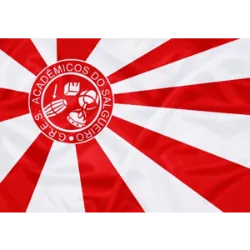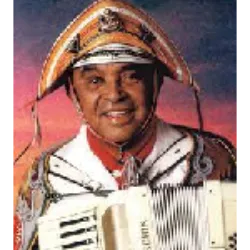Closed Body Willow

Acadêmicos do Salgueiro will take to Marquês de Sapucaí in 2025 the theme Salgueiro de Corpo Fechado
, written by carnival designer Jorge Silveira and scriptwriter Igor Ricardo. The red and white school promises a remarkable parade, exploring the human relationship with spirituality and the search for protection in the face of life's adversities.
The theme delves into the world of faith, bringing references to rituals, beliefs and mystical practices that span generations. With the strength of its traditions, Salgueiro seeks to move the public and reaffirm its cultural identity on the avenue.
With a strong samba and an impressive visual, the school promises a powerful parade, reinforcing religious syncretism and the connection with protective energies. Salgueiro de Corpo Fechado is already preparing to shine and win the long-awaited championship.
Excerpt from the Samba-Enredo:
Macumbeiro, mandingueiro, batizado no gongá
Quem tem medo de quiumba, não nasceu pra demandar
Meu terreiro é a casa da mandinga
Quem se mete com o salgueiro acerta as contas na curimba...
Malunguinho: The Messenger of Three Worlds

Unidos do Viradouro will bring to Marquês de Sapucaí, in 2025, the plot Malunguinho: The Messenger of Three Worlds
, written by carnival designer Tarcísio Zanon. The school will tell the story of Malunguinho, an Afro-indigenous entity that moves between worlds as Caboclo, Mestre and Exu/Trunqueiro, a symbol of resistance and freedom.
The narrative returns to the 19th century, in Pernambuco, highlighting the Quilombo do Catucá, where João Batista, the last quilombola leader to adopt the name Malunguinho, faced harsh persecution for his libertarian actions. The plot will bring to the avenue the strength of the quilombola struggle, the ancestry and the fusion between Afro and indigenous cultures, honoring the popular spirituality of the Northeast.
With a powerful and historic parade, Viradouro promises to move the public by highlighting the faith, courage and legacy of Malunguinho in the fight against oppression.
Excerpt from the Samba-Enredo:
Acenda tudo que for de acender,
Deixa a fumaça entrar,
Sobô nirê mafá, sobô nirê,
Evoco, desperto, nação coroada,
Não temo inimigo,
Calopo na estrada, a noite é abrigo,...
Test yourself with one of these challenges 👇
Discover some interesting facts about Carnival in Rio de Janeiro
Ómi Tútu to Olúfon

The Imperatriz Leopoldinense, current runner-up in the Rio Carnival, will take to Marquês de Sapucaí in 2025 the theme Ómi Tútu to Olúfon – Fresh water for the Lord of Ifón
, written by carnival designer Leandro Vieira. After almost 50 years, the school returns to the Afro-religious theme, exalting the mythology of the orishas.
The narrative will tell the journey of Oxalá to the kingdom of Oyó, where he visits Xangô, in a theme that promises to unite religiosity, tradition and cultural richness. The Queen of Ramos promises a grand parade, full of symbolism and references to the power of the orixás.
With an imposing look and an engaging samba, the Imperatriz bets on spirituality and African heritage to move the audience and shine on the avenue.
Excerpt from the Samba-Enredo:
Ofereça pra Exú… um ebó pra proteger
Penitência de Exú, não se deixa arrefecer
Ele rompe o silêncio com a sua gargalhada
É cancela fechada, é o fardo de dever...
Unidos de Padre Miguel: Egbé Iyá Nassô

Unidos de Padre Miguel promises to thrill the audience at Carnival 2025 with the theme "Egbé Iyá Nassô",, developed by carnival designers Alexandre Louzada and Lucas Milato. The school from Vila Vintém will pay a grand tribute to Iyá Nassô, a central figure in the history of Candomblé in Brazil. The parade will tell her story from Oyó, in Africa, to her arrival in Salvador, where she founded Ilê Axé Iyá Nassô Oká, better known as Casa Branca do Engenho Velho, considered the birthplace of the Afro-Brazilian faith.
With red and white in reverence to Xangô, UPM will bring to the avenue the black resistance and feminine power of the ialorixás, who perpetuated a legacy of struggle and spirituality. The school will exalt the ancestral Axé that sprouted in Bahia and spread throughout Brazil, giving rise to temples such as Gantois and Axé Opô Afonjá. Under the strong singing of the community and the beating of the drums, Unidos reaffirms its identity and promises a show of faith, culture and emotion.
Excerpt from the samba-enredo:
Awurê Obá kaô! Awurê Obá kaô!
Vila Vintém é terra de macumbeiro!
No meu Egbé governado por mulher
Iyá Nassô é rainha do candomblé!...
Laíla de todos os santos

Beija-Flor de Nilópolis announced that its theme for Carnival 2025 will be Laíla de todos os santos, Laíla de todos os Sambas
, a tribute to one of the school's greatest stalwarts. Under the signature of carnival designer João Vitor Araújo and research by Bianca Behrends, Vivian Pereira and Guilherme Niegro, the parade will exalt Laíla's trajectory, her religiosity and her devotion to Xangô, in addition to highlighting her contribution to Carnival.
A key figure in the history of Beija-Flor, Laíla was one of the people largely responsible for revolutionizing the parades, becoming a reference in the harmony and development of the performances. The plot also promises an exciting moment by recreating a symbolic reunion between Laíla and Joãosinho Trinta on the spiritual plane, reliving the partnership that marked the Rio carnival.
With this tribute, Beija-Flor is preparing a parade full of emotion, faith and the grandeur that consecrated Nilópolis at the top of samba.
Excerpt from the samba-enredo:
Da casa de Ogum, Xangô me guia
Da casa de Ogum, Xangô me guia
Dobram atabaques no quilombo Beija-Flor
Terreiro deKaô meu velho!
Volta e me dá os caminhos
Conduz outra vez meu destino
Traz os ventos de Oyá... Laíla, meu griô...
Mocidade promises an intergalactic trip

Mocidade Independente de Padre Miguel will embark on a futuristic journey at Marquês de Sapucaí with the theme Back to the future, there are no limits to dreaming
in Carnival 2025. The school from the West Zone promises a grand parade, mixing science fiction and reflection on the direction of humanity.
According to the official announcement, Mocidade will take an intergalactic journey, reconnecting with the brilliance of a Young Star. The theme proposes a manifesto for the future, questioning the paths that society should follow. The school, known for its innovations and striking parades, relies on a bold and technological visual approach to enchant the public.
With this bold plot, Mocidade reinforces its tradition of impactful shows, promising a parade full of visual effects, references to pop culture and an inspiring message about the importance of dreams in building the future.
Excerpt from the samba-enredo:
O céu vai clarear
Iluminar a zona oeste da cidade
E Deus vai desfilar
Pra ver o mago recriar a Mocidade...
Vila Isabel promises a haunted parade

Unidos de Vila Isabel promises to send shivers down the spines of the audience at Marquês de Sapucaí with the theme The more I pray, the more ghosts appear
, written by carnival designer Paulo Barros. For Carnival 2025, the blue and white school will delve into the universe of fear and ghosts that inhabit the popular imagination, whether in childhood or adulthood.
With an innovative approach, the school will explore suspense and fantasy, bringing urban legends, supernatural figures and spine-chilling stories to the avenue. Time suspended. Terror. Chills down the spine. Breath held. Fear of the fantastic, of that which torments us
, highlighted the official profile of Vila, instigating the curiosity of the audience.
Known for his surprising productions, Paulo Barros will bet on special effects and immersive allegories to create a dark and intriguing atmosphere. With this plot, Vila Isabel promises a remarkable parade, transforming fear into a spectacle in Sapucaí.
Excerpt from the samba-enredo:
Embarque nesse trem da ilusão
Não tenha medo de se entregar
Pois nosso maquinista é capitão
E comanda a legião que vem lá do Boulevard...
Test yourself with one of these challenges 👇
HOME










